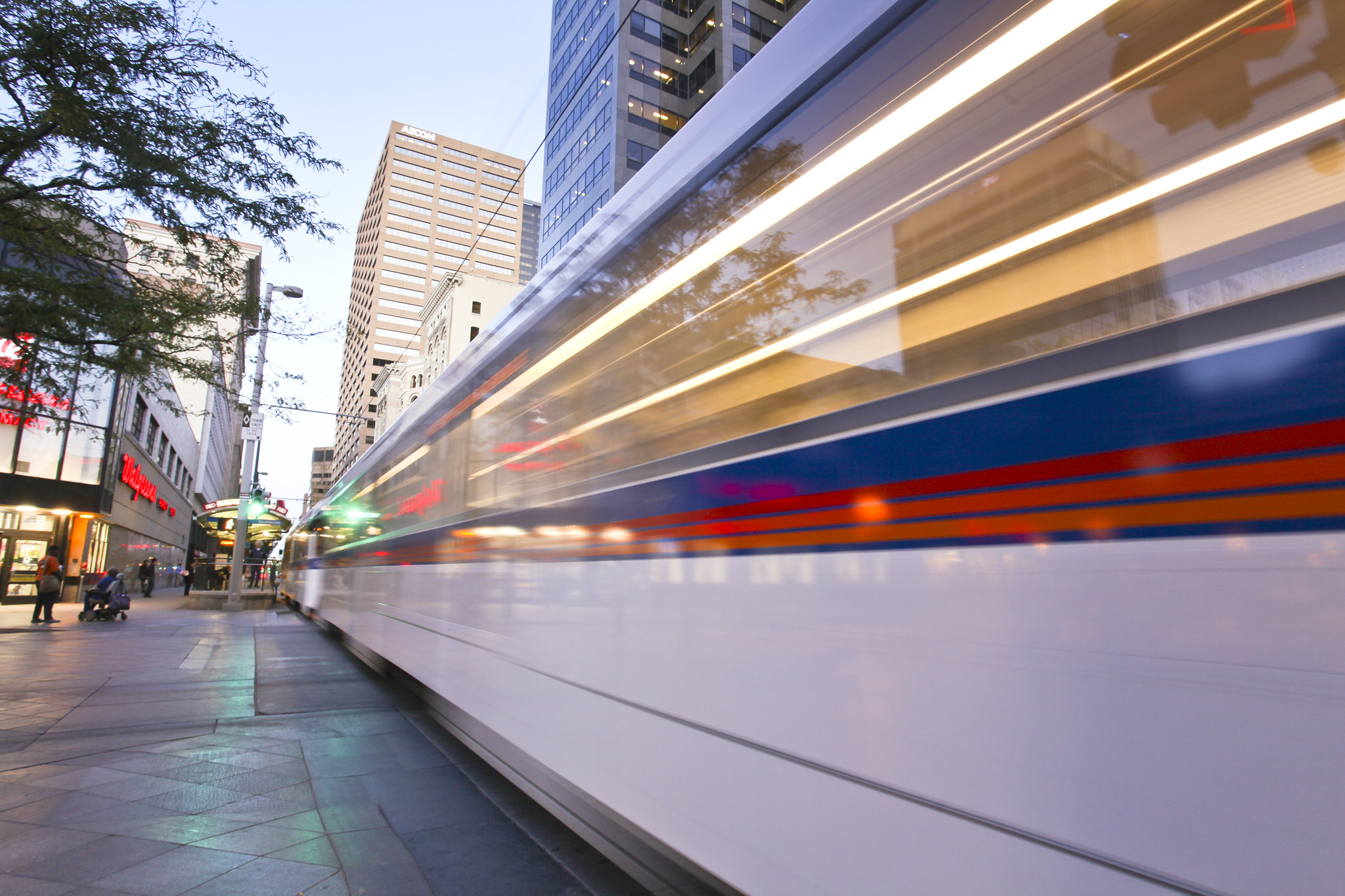
E, F and H Lines
Facts
- Length (miles): 19
- Stations: 13
- Frequency: 5 minutes during peak; 7.5 minutes during off-peak/weekends
- Parking: 6,630 parking spaces
Project Overview
- The Southeast Corridor Light Rail Line is 19 miles long and runs along the west side of I-25 from Broadway in Denver to Lincoln Avenue in Douglas County, and in the median of I-225 from I-25 to Parker Road in Aurora, connecting the two largest employment centers in the Denver area.
- In 1995, Colorado Department of Transportation (CDOT), Regional Transportation Distrct (RTD) and the Denver Regional Council of Governments (DRCOG) began conducting a Major Investment Study (MIS) in an effort to find the best solution to the ever-growing problem of congestion in the southeast corridor. In 1998, CDOT, RTD, the Federal Transit Administration (FTA), and the Federal Highway Administration (FHWA) joined forces to conduct an Environmental Impact Statement (EIS). The Record of Decision was issued in March 2000.
- In May 2001, the project was named the Transportation Expansion (T-REX) Project, and the Southeast Corridor Constructors team, a joint venture of Kiewit Construction and Parsons Transportation Group, was selected as the design-build contractor.
- The T-REX Project was a $1.67 billion highway expansion and light rail project directed by the Colorado Department of Transportation and RTD. In addition to widening I-25 and I-225 in the southeast corridor of the Denver metro area and building a light rail transit line, T-REX built several bridges and interchanges, improved drainage, enhanced bicycle and pedestrian access, and provided transportation management elements.
- Of the total $1.67 billion T-REX budget, $879 million was designated for light rail a $795 million for highway improvements. T-REX was funded through voter-approved bond issues. In 1999, voters approved separate RTD and CDOT bond issues. In November 2000, RTD also received a Full Funding Grant Agreement (FFGA) for $525 million from the FTA.
- On September 24, 2001, T-REX celebrated its groundbreaking, and construction began in early October.
- In 2004, construction of the Elati Light Rail Maintenance Facility was completed.
- Construction was completed in September 2006. After final testing of the light rail system, the Southeast Corridor Light Rail opened ahead of schedule and under budget on November 17, 2006.
- The Elati Light Rail Maintenance Facility with communications, control systems, and 34 light rail vehicles was originally built as part of the T-REX Project. It was completed in the summer of 2011.
System Characteristics
- 19 miles of light rail, 15 miles along I-25 from Broadway to Lincoln Avenue (I-25 & Broadway Station to the Lincoln Station), and 4 miles along I-225 to Parker Road (I-25 & Broadway Station to the Nine Mile Station).
- 13 light rail stations (Louisiana & Pearl, University of Denver, Colorado, Yale, Southmoor, Belleview, Orchard, Arapahoe at Village Center, Dry Creek, County Line, Lincoln, Dayton and Nine Mile).
- Park-n-Rides at all stations except for the Louisiana & Pearl station, which features a neighborhood plaza built over the Louisiana & Pearl Light Rail Station, nicknamed “The Louisiana Lid.” The Park-n-Rides provide a total of over 6,630 parking spaces along the Southeast Corridor.
- New light rail maintenance facility with new communications and control system and 34 new light rail vehicles.
- Extensive bus feeder system to transport light rail riders to and from the stations.
- The Art-n-Transit program showcases a separate theme at each station with functional art, such as windscreen benches, decorative ironwork, trash receptacles, and shelters. Commissioned art has also been provided at each station.
- Frequency of Trains:
- Peak: 5 minute frequencies
- Off-peak: 7.5 minute frequencies
- Weekend: 7.5 minute frequencies
Light Rail Estimated Ridership
- Average Weekday Ridership Projections:
- Year 2009 projection 33,800
- Year 2020 projection 38,100
- 2016 Average weekday ridership on the E, F, and H lines: 42,103
Ridership
- 2016 Total Ridership: 12,886,894
- 2019 Total Ridership: 12,185,368